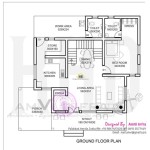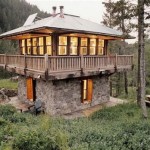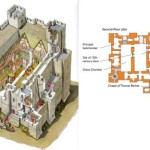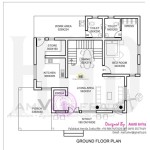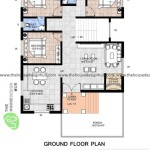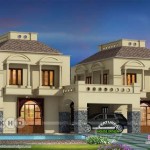Large Cottage Floor Plans: Designing for Comfort and Space
Cottage-style homes evoke a sense of warmth, charm, and connection to nature. While traditionally associated with smaller footprints, modern interpretations of cottage design are increasingly incorporating larger floor plans to accommodate growing families and evolving lifestyles. Large cottage floor plans offer the opportunity to blend the quintessential cottage aesthetic with the benefits of ample living space, allowing homeowners to enjoy both cozy intimacy and room for entertaining and everyday living.
Designing a large cottage floor plan requires careful consideration of several key elements to ensure that the resulting home retains the charm and character of the cottage style while effectively utilizing the expanded square footage. This article explores the essential aspects of designing large cottage floor plans, covering elements such as layout considerations, distinctive architectural features, interior design principles, and the overall integration of indoor and outdoor spaces.
Optimizing Layout for Functionality and Flow
Effective layout design is paramount in any home, but it becomes particularly crucial in larger cottage floor plans to prevent the space from feeling disjointed or overwhelming. The goal is to create a floor plan that balances open-concept living with clearly defined zones for specific activities, ensuring a seamless flow between different areas of the house.
One common approach is to designate a central "heart of the home," typically encompassing the kitchen, dining area, and living room. This central hub provides a gathering space for family and friends and fosters a sense of connection throughout the house. Strategically placing this central area near entry points and other frequently used spaces can enhance convenience and accessibility.
Within the open-concept layout, it is important to establish visual cues and subtle divisions to define different functional zones. This can be achieved through the use of architectural elements such as archways, half-walls, or changes in ceiling height. Furniture placement can also play a significant role in defining spaces, with strategically positioned sofas, bookshelves, or area rugs delineating the boundaries of the living room or dining area.
In addition to the central living areas, large cottage floor plans often incorporate additional spaces such as home offices, media rooms, or dedicated playrooms. When planning these spaces, it is important to consider their proximity to other areas of the house and the level of privacy required. Home offices, for example, might benefit from being located in a quieter area of the house, while playrooms could be situated closer to the main living areas for easy supervision.
Circulation pathways are another critical aspect of layout design. Wide hallways and clear pathways ensure easy movement throughout the house, preventing bottlenecks and congestion. Consider the natural flow of traffic between different rooms and design the layout to minimize unnecessary steps and detours.
Finally, consider the orientation of the house on the building site. Maximizing natural light and views is essential for creating a bright and inviting cottage environment. Orienting the main living areas towards the south or east can capture morning sunlight and provide passive solar heating in cooler months. Large windows and strategically placed skylights can further enhance natural light penetration.
Incorporating Distinctive Cottage Architectural Features
The architectural features of a cottage home are what truly define its character and charm. When designing a large cottage floor plan, it is important to incorporate these features in a way that is both visually appealing and structurally sound. Classic cottage elements such as gabled roofs, dormer windows, and covered porches can be adapted and scaled to suit the larger footprint while maintaining the overall aesthetic.
Gabled roofs are a hallmark of cottage architecture, providing visual interest and creating vaulted ceilings in upper-story rooms. Varying the roof pitches and adding decorative details such as scalloped shingles or exposed rafter tails can enhance the cottage charm. Dormer windows not only add architectural interest but also provide valuable natural light and ventilation to attic spaces.
Covered porches are an integral part of the cottage experience, offering a welcoming transition between indoor and outdoor spaces. A large cottage floor plan can accommodate a wrap-around porch or multiple porches strategically located around the house. Porches provide a space for relaxation, entertaining, and enjoying the surrounding landscape.
Other distinctive architectural features commonly found in cottage homes include:
- Stone or brick accents: Adding stone or brick to the exterior facade or interior fireplaces can create a rustic and timeless look.
- Board-and-batten siding: This traditional siding style adds texture and visual interest to the exterior walls.
- Multi-paned windows: These windows evoke a sense of history and add character to the house.
- Arched doorways: Arched doorways add a touch of elegance and soften the lines of the interior spaces.
- Beamed ceilings: Exposed beams add warmth and character to the ceilings, creating a rustic and inviting atmosphere.
- Built-in shelving and cabinetry: Built-ins provide functional storage and add a sense of craftsmanship to the interior spaces.
When incorporating these architectural features into a large cottage floor plan, it is important to maintain a sense of scale and proportion. Avoid overcrowding the design with too many details, and ensure that the features are appropriately sized for the overall scale of the house. A skilled architect or designer can help to strike the right balance between authenticity and modern functionality.
Integrating Interior Design Principles for a Cohesive Aesthetic
The interior design of a large cottage home should complement the architectural features and reinforce the overall cottage aesthetic. The goal is to create a warm, inviting, and comfortable space that reflects the personality of the homeowners while remaining true to the cottage style. Key interior design principles to consider include color palettes, materials, furnishings, and decorative elements.
Color palettes in cottage homes typically lean towards soft, muted tones that evoke a sense of tranquility and nature. Popular color choices include creams, whites, grays, blues, and greens. These calming colors create a backdrop that allows natural materials and decorative accents to stand out. Pops of brighter colors can be incorporated through artwork, textiles, and accessories to add visual interest and personality.
Natural materials are essential for creating a cottage atmosphere. Wood is a prevalent material, used for flooring, cabinetry, furniture, and trim. Reclaimed wood adds character and history to the space. Stone and brick are also commonly used for fireplaces, accent walls, and flooring. These natural materials bring warmth and texture to the interior spaces, creating a connection to the outdoors.
Furnishings in a cottage home should be comfortable, inviting, and slightly eclectic. A mix of vintage and new pieces can create a layered and personalized look. Upholstered furniture with soft fabrics and comfortable cushions is essential for creating a cozy atmosphere. Antique or repurposed furniture adds character and history to the space. Avoid overly modern or minimalist furnishings, as they can clash with the overall cottage aesthetic.
Decorative elements play a crucial role in creating a cottage-style interior. Floral patterns, botanical prints, and vintage artwork add a touch of whimsy and charm. Natural elements such as seashells, branches, and stones can be incorporated into the décor. Textiles such as quilts, throws, and cushions add warmth and texture. Personal touches such as family photos and handmade items can make the house feel like a home.
Lighting is another important aspect of interior design. Natural light is essential for creating a bright and inviting space. Supplement natural light with a combination of ambient, task, and accent lighting. Chandeliers, pendant lights, and sconces can add architectural interest and create a warm and inviting atmosphere. Table lamps and floor lamps provide task lighting for reading and other activities.
Blending Indoor and Outdoor Spaces
A hallmark of cottage living is a strong connection to the outdoors. Large cottage floor plans offer the opportunity to seamlessly blend indoor and outdoor spaces, creating a fluid and harmonious living environment. This can be achieved through the strategic placement of windows, doors, and outdoor living areas.
Large windows and sliding glass doors are essential for maximizing natural light and views. These features allow homeowners to enjoy the beauty of the surrounding landscape from inside the house. Strategically placing windows to capture views of gardens, forests, or water features can enhance the sense of connection to nature.
Outdoor living areas such as porches, patios, and decks extend the living space beyond the confines of the house. Covered porches provide a sheltered space for relaxing and entertaining, while patios and decks offer a more open-air experience. These outdoor areas can be furnished with comfortable seating, dining tables, and outdoor kitchens to create a welcoming and functional extension of the living space.
Consider incorporating elements that blur the lines between indoor and outdoor spaces. For example, using the same flooring material on the interior and exterior can create a seamless transition. Adding potted plants and greenery to both indoor and outdoor spaces can further enhance the connection to nature. Installing French doors or bi-fold doors that open fully can create a wide-open passage between the interior and exterior.
Garden design is also an important consideration for blending indoor and outdoor spaces. A well-designed garden can enhance the beauty and tranquility of the cottage setting. Incorporating cottage-style garden elements such as flower beds, winding paths, and water features can create a charming and inviting outdoor space. Consider planting native species and creating a habitat for local wildlife.
The overall goal is to create a living environment that seamlessly integrates the interior and exterior, allowing homeowners to enjoy the beauty and tranquility of the surrounding landscape. By carefully considering the layout, architectural features, interior design principles, and integration of indoor and outdoor spaces, it is possible to create a large cottage floor plan that embodies the charm and comfort of the cottage style while providing ample space for modern living.

Two Story Cottage House Plan Olde Stone Plans Lake

Cottage Style House Plan Screened Porch By Max Fulbright Designs

North Florida Cottage Floor Plans Southern House Cabin

Cottage Floor Plans Offcote Grange Holidays

Warm And Welcoming Cottage House Plans Blog Dreamhomesource Com

Design For The Cottage Large House Mr M H Lakin 1888 89 Bi S Itchington Warwickshire Front And Rear Elevations Ground First Floor Plans Drawing Riba Pix

Cottages Small House Plans With Big Features Blog Homeplans Com

Storybook House Plans Cozy Country Cottages

Appalachia Mountain A Frame Lake Or House Plan With Photos Plans Rustic

House Plan 4 Bedrooms 2 5 Bathrooms Garage 2837a V1 Drummond Plans
Related Posts

